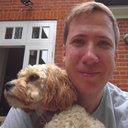Neuropsychiatric Manifestations of Colloid Cysts: a review of the literature.
キーワード
概要
Colloid cysts account for approximately 2% of primary brain tumours and the majority of cases are identified in the fourth and fifth decade. They are small, gelatinous neoplasms lined by a single layer of mucin-secreting columnar epithelium that are thought to arise from errors in folding of the primitive neuroepithelium. They develop in the rostral aspect of the third ventricle in the foramen of Monro in 99% of cases and despite their benign histology carry a poor prognosis, with a mortality greater than 10% in symptomatic cases. The location of colloid cysts within the ventricular system results in obstruction of the foramen of Monro as the cyst grows, disrupting the circulation of cerebrospinal fluid (CSF) and causing hydrocephalus. This is the mechanism behind the most common presenting symptoms of postural headache, nausea and vomiting - a clinical picture synonymous with hydrocephalus and intracranial pathology. In addition to these classical neurological symptoms, there is a high prevalence of psychiatric symptoms in the patient population, with symptoms ranging from anterograde amnesia to gustatory hallucination. These symptoms can occur with or without the presence of hydrocephalus, and are thought to be secondary to compression of connecting pathways between the mesocortices and subcortical limbic regions. These symptoms have been shown to be comparative in frequency to the classical symptoms, yet are rarely the reason for referral to a neurological or neurosurgical service for investigation.



